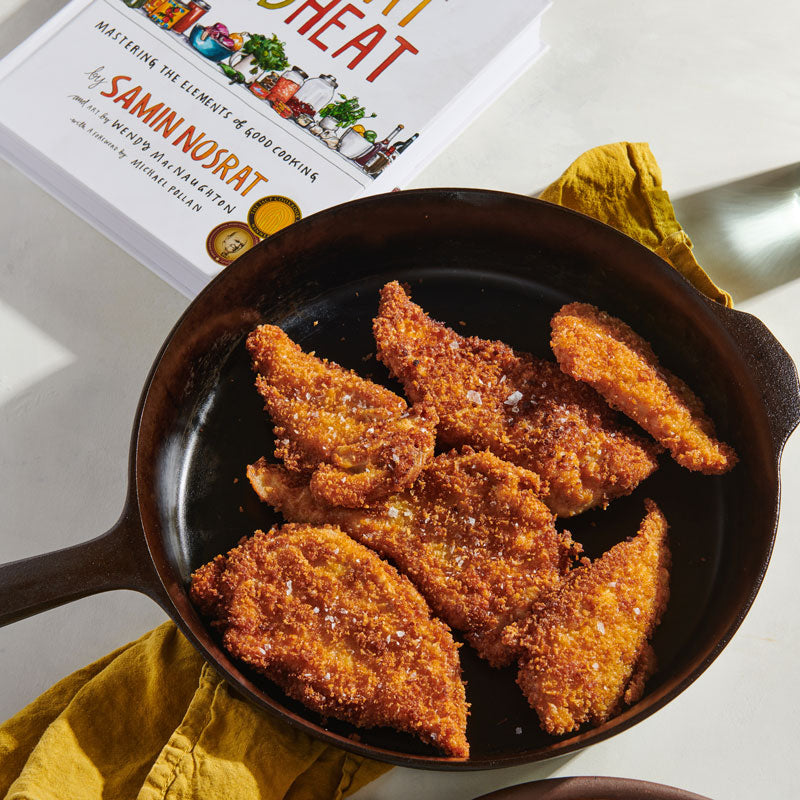There’s a good reason why we only sell one cookbook—Samin Nosrat’s breakout hit Salt, Fat, Acid, Heat—in our store: no other book has had such a huge impact on our own home cooking. We recently caught up with the Bay Area-based author to hear her takes on cast iron (see our Q&A below, then check out Samin’s recipe for schnitzel-like pan-fried chicken). But first, Field Company founders Chris and Stephen Muscarella share their personal connection to this monumental cookbook.
“At Field Company, we believe deeply in the value of skills, time, and use—both in the cookware we make and the recipes we use them to cook. When you start learning any skill, it’s helpful to just practice the form or the recipe that has been handed down from the expert. But the joy of skills is not found in memorization or replication—it’s being able to take things, improvise, and make them your own. Getting there takes some time and practice—and ultimately being able to connect your own intuition to underlying principles. Salt, Fat, Acid, Heat is a remarkable book because it shines a light on so many things around cooking that you may have felt some intuition about but have never been able to articulate. Samin is a brilliant natural teacher who lays out the principles of good cooking with her own joy in a way that’s accessible to anyone—and that joy will make its way into your own kitchen.” —CM
“Before Salt, Fat, Acid, Heat, I was a hit or miss cook. I historically came at cooking from an eater’s perspective—I cook to eat something tasty. Samin illuminated principles that revealed where my experimentation was going right and where I was consistently wrong. Now I no longer cook in fear that all of my work is not going to lead to deliciousness. And knowing the principles makes the cooking that much more enjoyable. Her book literally changed my relationship to food and cooking by an order of magnitude.” —SM








